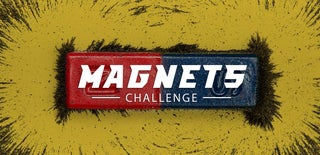Introduction: Mostly 3D Printed Push Button
For the past couple of years I have been building replicas of educational computer "toys" from the 50's and 60's. One of the challenges I encounter is finding period parts, or at least parts that are similar enough to pass as authentic.
Take my Minivac 601 Replica for example. The panel lights I found for it were not very similar to the original's, but I was able to 3D print "caps" for them that made them look pretty comparable. Finding a close match like that is rare though. Minivac 601 employed a motorized 16 position rotary switch for which I had no option but to design and build my own Mostly 3D Printed Rotary Switch. For a row of push buttons on the machine I used readily available arcade buttons which were the right color, red, but considerably larger than the original's. With the experience of having built a couple of other panel mount components since I made the Minivac (see Mostly 3D Printed Slider Switch and Panel Mount LED Socket), I decided to see if I could have made my own push buttons. Short answer. Yes!
This Instructable will show you how to build your own panel mounted push button. The button is almost entirely 3D printed with only a few easy to find additional parts. There is no spring in this button, or any other mechanical mechanism for that matter, yet it has a very satisfying bouncy feel when pushed. How is this possible? Magnets!
Supplies
In addition to the 3D printed parts you will need:
- 1 Reed Switch - Digi-Key part number 2010-1087-ND
- 5 Disk Magnets - 6 mm (diameter) x 3 mm (height)
- 4 M2 x 6 mm bolts
- 1 foot 22 AWG solid core wire
Step 1: Print the Parts
I printed the parts with the following settings:
Print Resolution: .1 mm - I know this is time consuming but I wanted the parts to be as smooth as possible since they will be sliding against each other..
Perimeters: 3
Infill: 20%
Filament: AMZ3D PLA
Notes: No supports. Print the parts in their default orientation.
To make the basic push button switch you will need the following:
- 1 Push Button Base
- 1 Push Button Gasket (optional)
- 1 Push Button Nut
- 1 Push Button Shaft
- 1 Push Button Top
- 1 Push Button Wire Guide (optional)
Step 2: Assemble the Parts
There is not much to this build once the parts are printed.
- Insert the reed switch and magnets into the Push Button Base. Make sure that the magnets are inserted with the same polarity. All three parts should be flush with the floor of the Base.
- Optionally place the Push Button Gasket on top of the inserted parts. A few drops of glue here will ensure that the parts are held firmly in place.
- Add the three magnets to the bottom of the Push Button Shaft. The magnets must the inserted with the same polarity as those in the Push Button Base Base so that they will repel each other when in use. You may need a drop of glue to hold the magnets in place.
- Slide the Push Button Shaft into the Push Button Base. If the magnets are oriented correctly it should try to pop back out on its own.
- Attach the Push Button Top to the Push Button Base with two M2 x 6 mm bolts to hold the Shaft in place. The bolts should self tap into the holes pretty easily, holding the Top firmly in place, and allowing the Push Button Shaft to move freely up and down.
- Carefully solder some lead wires to the two reed switch pins. I then used the wire guide to hold them firmly in place.
You should now be able to push the button down and it should just pop back up on its own. If not check to see if the Shaft is rubbing against the sides of the Top or Base. You might have to do a bit of sanding to get it to move freely if this is the case. Finally check to make sure that your magnets are repelling each other and not attracting.
Step 3: Testing
Now I just could have hooked the button up to my multi meter to test it but where's the fun in that. Instead I printed a little test stand (full disclosure I was looking for excuses to print with some "transparent" filament that I just got), hooked the button up to a power supply and a LED, and made a litte video. Check.
Step 4: Final Thoughts
Now that I have a viable DIY panel mount push button, I haven't yet decided whether or not I will go back and update my Minivac 601 with the new design. However, this exercise has reinforce what I already knew, that the combination of magnets and reed switches can be a powerful design building block.
With this dynamic duo I have built some very capable parts: a rotary switch, a slider switch, and now a push button. Magnets and reed switches also played a starring role in my Digi-Comp I Redux tribute to vintage computers. And I'm not done. I have a rocker switch design in the works. Stay tuned. (Edit 1/22/2020 Done: Mostly 3D Printed Rocker Switch.)
It is my sincerest hope that others in the maker community will find some of these design ideas useful in their own projects.

Runner Up in the
Magnets Challenge

















